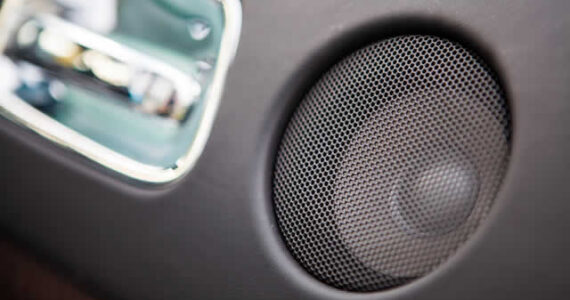The rumble of bass notes cascading through perfectly positioned speakers. Crystal-clear highs that make you feel like the artist is performing right beside you. This is the magic of a well-designed car surround sound system—an upgrade that transforms every drive into an immersive audio experience.
While factory-installed car audio systems serve their basic purpose, they often fall short of delivering the rich, enveloping soundscape that true audio enthusiasts crave. A custom car surround sound system bridges this gap, offering multi-dimensional audio that rivals high-end home theater setups. Whether you’re commuting to work or embarking on a cross-country road trip, the right system can turn your vehicle into a mobile entertainment hub.
The appeal extends beyond just music lovers. Movie enthusiasts can enjoy cinematic audio quality during rest stops, while families can create memorable experiences with immersive storytelling during long journeys. The investment in a quality car audio system pays dividends in both entertainment value and vehicle resale appeal.
Setting up such a system requires careful planning, the right components, and proper installation techniques. This comprehensive guide will walk you through every aspect of creating your dream car audio setup, from understanding the fundamentals to fine-tuning the final product.
Understanding Surround Sound
Surround sound creates an audio environment that envelops listeners from multiple directions, rather than just projecting sound from front-facing speakers. Unlike traditional stereo systems that use two channels (left and right), surround sound employs multiple audio channels to create a three-dimensional listening experience.
The technology works by processing audio signals and distributing them across strategically placed speakers throughout your vehicle. Each speaker receives specific frequency ranges and timing cues that work together to create spatial awareness—you can actually pinpoint where sounds are coming from within the audio mix.
Modern car surround sound systems typically support formats like Dolby Digital, DTS, or proprietary processing algorithms. These formats encode spatial information within the audio signal, allowing the system to recreate the original recording environment or mixing engineer’s intended soundstage.
Key Components Explained
A complete car surround sound system requires several essential components working in harmony. Understanding each element helps you make informed decisions about your setup and ensures compatibility across all components.
Speakers form the foundation of your system and come in various types suited for different frequency ranges. Woofers handle low-frequency bass sounds, typically ranging from 20Hz to 200Hz. Midrange speakers reproduce vocals and most instruments, covering roughly 200Hz to 5kHz. Tweeters manage high-frequency sounds like cymbals and vocal harmonics, operating from 5kHz to 20kHz and beyond. Component speaker systems separate these functions into individual drivers, while coaxial speakers combine multiple drivers into single units.
Amplifiers boost the audio signal from your head unit to levels capable of driving speakers effectively. They’re rated by power output (measured in watts RMS) and the number of channels they support. Multi-channel amplifiers can power several speakers simultaneously, while monoblock amplifiers typically drive subwoofers. Class D amplifiers offer excellent efficiency and generate less heat, making them ideal for car installations where space and power consumption matter.
Audio processors serve as the brain of your surround sound system. Digital signal processors (DSPs) manipulate audio signals to create surround effects, manage crossover frequencies, apply time delays, and correct acoustic issues. Some head units include built-in processing capabilities, while standalone processors offer more advanced features and greater flexibility.
Subwoofers specialize in reproducing very low frequencies that standard speakers cannot handle effectively. They add depth and impact to music while providing the foundation for movie soundtracks and gaming audio. Proper subwoofer integration requires careful consideration of enclosure type, amplifier power, and cabin acoustics.
Planning Your System
Successful car surround sound installation begins with thorough planning. This phase determines the quality of your final result and helps avoid costly mistakes during installation.
Budget considerations play a crucial role in component selection. Entry-level systems can deliver impressive improvements over factory audio, while high-end setups rival home theater systems in both quality and cost. Determine your priorities—whether you value maximum volume, pristine clarity, deep bass response, or balanced overall performance—to guide your component choices.
Vehicle compatibility affects every aspect of your installation. Some cars offer more installation-friendly layouts, while others present significant challenges. Research your specific vehicle model for known installation tips, potential obstacles, and available mounting locations. Consider factory integration options that retain steering wheel controls, navigation systems, and other convenience features.
Assessing Car Acoustics
Every vehicle presents unique acoustic characteristics that impact sound quality. Hard surfaces like glass and plastic create reflections that can cause echo or harsh resonances. Soft materials like fabric seats and carpeting absorb sound but may deaden certain frequencies. The vehicle’s size, shape, and interior materials all influence how sound waves interact within the cabin.
Perform a simple acoustic assessment by playing familiar music through your current system while seated in different positions. Notice how the sound changes from the driver’s seat versus rear passenger positions. Identify areas where sound seems muffled, overly bright, or lacking in certain frequency ranges. These observations guide speaker placement decisions and help identify areas that may benefit from acoustic treatment.
Road noise represents another significant factor. Highway driving introduces constant low-frequency rumble that can mask subtle musical details. Effective sound dampening materials applied to doors, floor panels, and the trunk area reduce unwanted noise intrusion and improve overall system performance.
Speaker Placement
Optimal speaker placement creates an even sound field throughout the cabin while maintaining the stereo imaging that makes surround sound effective. Front speakers should be positioned to create a stable center image for the driver and front passenger. This typically means mounting component tweeters at ear level in the A-pillars or dashboard, while midrange drivers go in the doors or lower dash.
Rear speakers extend the sound field backward and provide surround effects. Mounting locations include rear door panels, rear deck areas, or dedicated enclosures behind rear seats. The goal is creating enveloping sound without overwhelming the front soundstage or causing distracting localization effects.
Subwoofer placement depends on your vehicle’s layout and your bass preferences. Trunk-mounted subwoofers provide maximum flexibility for large enclosures and powerful amplifiers. Under-seat subwoofers save space but limit enclosure size and power handling. Some enthusiasts prefer multiple smaller subwoofers placed strategically throughout the vehicle for more even bass distribution.
Height considerations become important for true surround sound reproduction. Speakers mounted too low may create an artificial sound field, while those placed too high can cause fatigue during extended listening sessions. Aim for tweeter placement that directs sound toward occupants’ ears with minimal obstruction from seats or interior panels.
Installation Process
Professional installation ensures optimal results, but knowledgeable DIY enthusiasts can achieve excellent outcomes with proper preparation and patience. The installation process requires basic automotive knowledge, appropriate tools, and careful attention to safety procedures.
Begin by disconnecting the vehicle’s battery to prevent electrical damage during installation. Remove interior panels carefully, noting the location of mounting clips and fasteners for reassembly. Many modern vehicles use plastic clips that break easily, so having replacement clips on hand prevents frustration later.
Create a detailed installation plan that maps wire routing, component mounting locations, and power distribution. This roadmap prevents mistakes and ensures you have all necessary materials before beginning work. Consider how the installation affects vehicle functionality—avoid blocking airbag deployment paths, interfering with seat adjustments, or compromising structural integrity.
Wiring and Connections
Proper wiring forms the backbone of any reliable car audio system. Use high-quality wiring appropriate for each application—heavier gauge wire for power connections, shielded cables for signal transmission, and proper connectors that resist corrosion and vibration.
Power wiring starts at the vehicle’s battery with an appropriately sized fuse or circuit breaker installed within 18 inches of the positive terminal. Route power cables away from factory wiring harnesses to minimize interference. Use grommets when passing wires through metal panels to prevent chafing and potential short circuits.
Ground connections deserve special attention since poor grounding causes numerous audio problems. Connect ground wires to solid metal points that make good electrical contact with the vehicle’s chassis. Sand away paint or rust from connection points and apply dielectric grease to prevent corrosion.
Signal wires carry low-level audio from the head unit to amplifiers. Keep these cables separated from power wires to prevent alternator whine and other electrical noise. Use twisted-pair cables for balanced connections when possible, and ensure all connections are secure and properly insulated.
Mounting Components
Secure component mounting prevents rattles, vibrations, and potential damage from normal driving forces. Speakers require rigid mounting that allows proper acoustic coupling with the vehicle’s interior panels. Use appropriate gaskets and sealing materials to prevent air leaks that reduce bass response and overall efficiency.
Amplifier mounting locations must provide adequate ventilation while protecting components from moisture and physical damage. Trunk installations offer space and protection but require longer wire runs. Under-seat mounting saves space but may limit amplifier size and requires careful consideration of airflow.
Consider vibration isolation for sensitive components like digital processors and head units. Rubber isolators or foam padding can prevent mechanical vibrations from affecting electronic components and creating unwanted resonances in the audio path.
Calibration and Tuning
Even the best components require proper calibration to achieve their full potential. This process involves adjusting various parameters to compensate for vehicle acoustics and create the desired listening experience.
Start with basic level adjustments to ensure all speakers contribute appropriately to the overall sound. Use familiar music with known characteristics to evaluate tonal balance, stereo imaging, and overall system integration. Make small adjustments and listen to the results before making additional changes.
Crossover settings determine which frequency ranges each speaker reproduces. Proper crossover points prevent frequency gaps or overlaps that cause uneven response. Most car audio processors offer flexible crossover options with adjustable slopes and frequency points.
Time alignment compensates for the different distances between speakers and listeners. Since car occupants sit closer to some speakers than others, time delays ensure all sounds reach the listener simultaneously. This creates more accurate stereo imaging and improved soundstage depth.
Using Audio Calibration Tools
Professional installers use specialized tools like real-time analyzers and measurement microphones to optimize system performance objectively. These tools identify frequency response irregularities, phase issues, and other problems that may not be immediately obvious to the ear.
Many modern processors include automatic calibration features that use built-in microphones to measure the system’s response and apply corrective equalization. While these systems provide a good starting point, manual fine-tuning often yields better results tailored to individual preferences.
Mobile apps can supplement professional tools by providing spectrum analysis, signal generation, and basic measurement capabilities. While not as precise as dedicated equipment, these applications help DIY installers make informed adjustments and verify their work.
Elevate Your Drive With Premium Audio
A well-executed car surround sound system transforms every journey into an audio adventure. The combination of carefully selected components, proper installation, and thoughtful calibration creates an immersive environment that enhances both music listening and multimedia entertainment.
The investment in quality car audio extends beyond personal enjoyment. A professional installation adds value to your vehicle while providing years of reliable performance. Whether you tackle the project yourself or work with a professional installer, the result is a mobile entertainment system that rivals home theater setups.
Start planning your car audio upgrade by assessing your current system’s limitations and identifying your performance goals. Research component options within your budget, and don’t hesitate to seek advice from experienced installers or fellow audio enthusiasts. With proper preparation and execution, you’ll soon enjoy concert-hall quality sound wherever the road takes you.
- Crutchfield Car Audio Installation Guides
- Mobile Electronics Certified Professional (MECP) Installation Standards
- Car Audio & Electronics Association (CAE) Technical Resources
- Society of Automotive Engineers (SAE) Audio Standards
image credit: envato.com


















